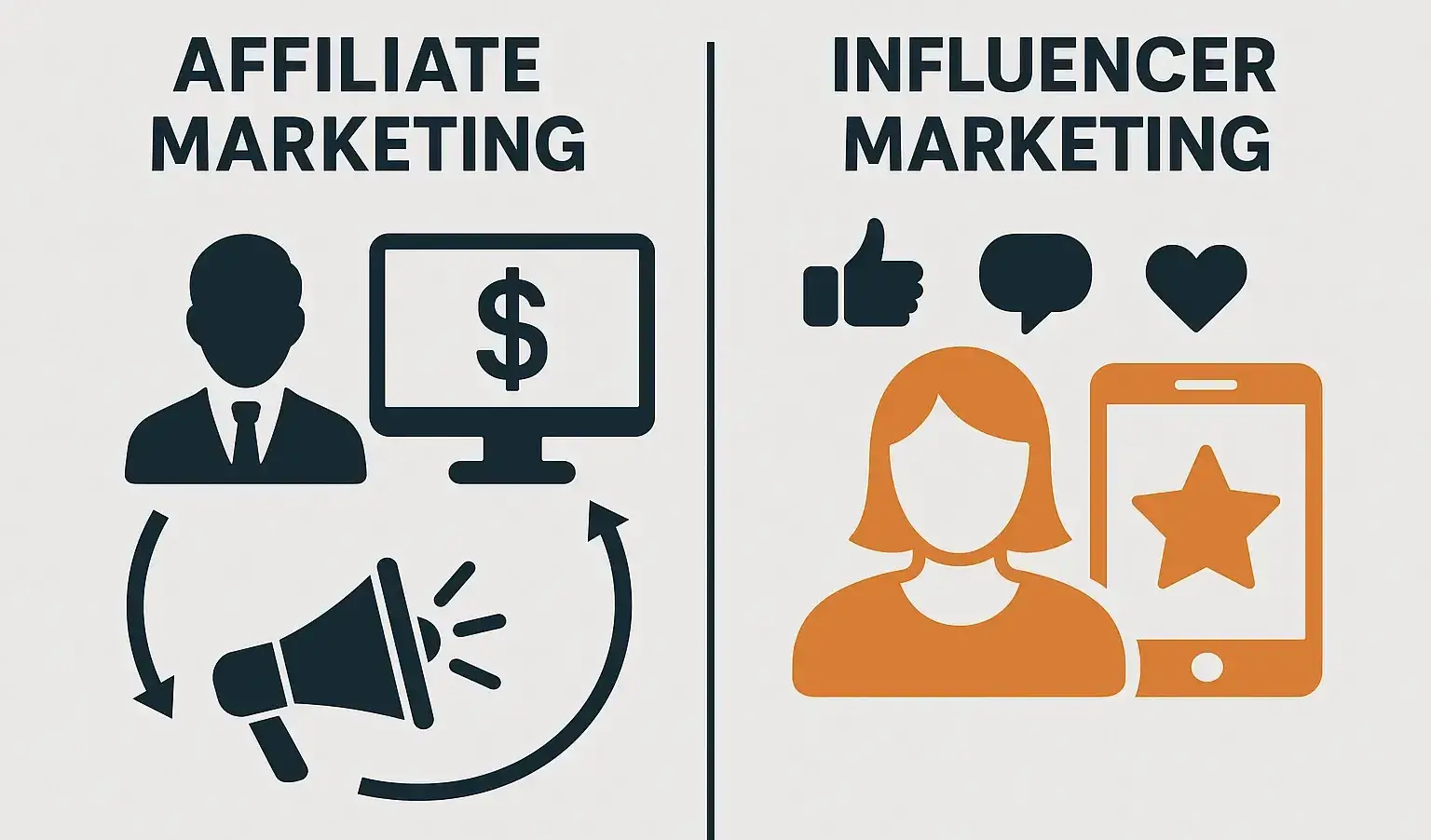What if the very ads you see every day were designed to exploit your vulnerabilities? For nearly 60%</a of low-income families, targeted advertisements drive the purchase of unhealthy foods, revealing the dark side of manipulative marketing. Vulnerable populations, including those marginalized by age, disability, socioeconomic status, or systemic inequalities, face increased risks of exploitation.
As marketing strategies become more sophisticated, ethical concerns about targeting these groups for profit intensify. Addressing these issues is vital to prevent further harm and promote corporate social responsibility.
Examples of vulnerable groups
1. Children & Adolescents: Marketing often targets these groups through persuasive advertising of sugary snacks, toys, and entertainment products, exploiting their developmental vulnerabilities and influencing consumption patterns. For instance, fast-food companies strategically use cartoon characters to attract young consumers, contributing to childhood obesity concerns.
2. Elderly: Elderly consumers are vulnerable to misleading advertisements for health products and financial services due to diminished cognitive abilities and limited digital literacy. Aggressive sales tactics for retirement investments may not align with their financial needs, potentially leading to financial exploitation.
3. Low-Income Individuals: Companies may target low-income communities with predatory lending schemes and high-interest financial products, exploiting their financial vulnerabilities. For example, payday loan companies advertise quick cash solutions but often impose exorbitant interest rates and fees, trapping individuals in debt cycles.
4. Minorities: Marketing can perpetuate stereotypes against minority and ethnic groups, such as promoting products that align with Eurocentric beauty standards, and excluding diverse representations in advertising campaigns.
5. People with Disabilities: Marketing often overlooks people with disabilities by excluding them from campaigns or using patronising representations. An example is the lack of accessible websites and digital content, which limits their access to information and products, highlighting the need for inclusive marketing strategies.
6. Chronic Illness Patients: Individuals with chronic illnesses may be susceptible to the marketing of unproven or ineffective health products and remedies, seeking relief from their conditions.
Characteristics and Challenges of The Vulnerable Populations
| Vulnerable Population | Characteristics | Challenges |
|---|---|---|
| Children and Adolescents | Easily influenced, developing critical thinking skills. | Susceptible to deceptive marketing and peer pressure. |
| Elderly Individuals | Diminished cognitive abilities and limited digital literacy. | More prone to scams and misleading advertisements. |
| Low-Income Consumers | Limited financial resources, often under economic stress. | Targeted by predatory financial products and high-interest loans. |
| Individuals with Low Media Literacy | Lacking critical analysis skills for media content. | Easily deceived by manipulative marketing tactics. |
| Persons with Disabilities | They may have physical, mental, or cognitive impairments. | Challenges in understanding or evaluating marketing messages. |
| Chronic Illness Patients | They are suffering from long-term health conditions, and seeking treatments. | Susceptible to the marketing of unproven or ineffective health products. |
Ethical Considerations in Marketing
Truthfulness and Transparency: All marketing claims should be honest and transparent to avoid misleading vulnerable populations.
Respect for Consumer Privacy: Marketers must protect consumer data and obtain consent before using it to avoid exploitation.
Avoiding Exploitation: Marketing should not exploit vulnerabilities like financial insecurity or lack of knowledge.
Cultural Sensitivity: Marketing strategies should be culturally sensitive, avoiding stereotypes or discriminatory practices.
Social Responsibility: Companies should consider societal impacts, promoting products that benefit consumers and communities.
Role of Marketing in Society
1. Influencing Consumer Behaviour: Marketing shapes consumer preferences and behaviours, often directing low-income or vulnerable populations towards products that may not be in their best interest. For example, aggressive advertising of unhealthy foods can lead to poor dietary choices among these groups, exacerbating health disparities.
2. Creating Awareness and Demand: Marketing can raise awareness about essential products and services that might benefit vulnerable populations. For instance, campaigns promoting affordable healthcare options or educational resources can empower these groups by providing them with crucial information and access.
3. Driving Economic Growth: Marketing stimulates demand, helping drive economic activity, creating job opportunities, and boosting local economies. However, when marketing targets vulnerable populations with predatory practices, it can lead to financial exploitation rather than genuine economic benefit.
4. Shaping Social Norms: Marketing is pivotal in shaping societal values and norms, influencing what is desirable or acceptable. When it promotes negative stereotypes or unrealistic standards, it can further marginalise vulnerable groups, reinforcing societal inequities.
5. Promoting Corporate Social Responsibility: Ethical marketing practices can reflect and promote corporate social responsibility, encouraging businesses to contribute positively to society. By prioritising the well-being of vulnerable populations, companies can build trust and foster a more inclusive and equitable market environment.
Ethical Frameworks and Theories of Marketing Practices
Utilitarianism: This theory focuses on the outcomes of actions, advocating for actions that maximise overall happiness or well-being. In marketing, this means practices aim to benefit the most consumers while minimising harm.
Deontological Ethics: Based on Immanuel Kant's philosophy, this framework emphasises the importance of duty and adherence to moral rules. Marketers should follow ethical principles such as honesty and fairness, regardless of the outcomes.
Virtue Ethics: This theory emphasises the character and virtues of the individual making decisions. Marketing encourages practitioners to embody integrity, honesty, and empathy in their strategies and interactions.
Rights-Based Ethics: This approach focuses on respecting and protecting individual rights. Marketers should ensure that their practices do not infringe upon consumers' fundamental rights, such as privacy and truthful information.
Justice and Fairness: This framework advocates for the equitable distribution of benefits and burdens based on the principles of fairness and equality. In marketing, it means ensuring that no group, especially vulnerable populations, is unfairly targeted or exploited.
Care Ethics: Emphasises the importance of relationships and care for others. Marketing practices should prioritise the well-being of consumers, fostering trust and avoiding harm, especially to vulnerable groups.
Laws and Regulations Governing Marketing Practices
1. Federal Trade Commission Act (FTC Act)
Prohibits unfair or deceptive acts or practices in commerce, including false advertising and deceptive marketing claims, ensuring consumer protection and fair competition. However, the rapid evolution of digital marketing tactics often outpaces these regulations, allowing companies to exploit vulnerable individuals with manipulative ads.
2. CAN-SPAM Act
Sets rules for commercial email, requiring marketers to provide opt-out options, clear identification, and truthful subject lines to reduce spam and protect consumer privacy. Despite this, enforcement can be inadequate, permitting companies to misuse personal data without significant repercussions.
3. Telephone Consumer Protection Act (TCPA)
Regulates telemarketing calls by requiring prior express consent for calls to personal phones and restricting automated dialling systems and unsolicited text messages. The regulation aims to protect consumers from unwanted marketing calls but often lacks stringent oversight, particularly in digital marketing practices.
4. California Consumer Privacy Act (CCPA)
Grants California residents rights over their data, including the right to know, access, and delete personal information collected by businesses. This impacts how companies handle and market consumer data, but many privacy regulations fail to enforce strict penalties, allowing for data misuse.
5. EU General Data Protection Regulation (GDPR)
Provides a comprehensive framework for protecting individuals' data in the European Union, requiring consent for data processing, data protection measures, and respect for individuals' rights. Despite its robustness, enforcement varies, and gaps in protecting against deceptive advertising and influencer marketing remain.
Policy Recommendations For Marketing to Vulnerable Groups
Restrictions on Advertising to Children: Implementing strict guidelines on advertising directed at children, as seen in Sweden, where TV advertisements targeting children under 12 are prohibited. This protects young audiences from manipulative marketing tactics that exploit their vulnerability and lack of understanding.
Ethical Guidelines for Health-related Products: Enforcing clear regulations on the marketing of health-related products, like pharmaceuticals and dietary supplements, as exemplified by the FDA in the United States. This ensures that vulnerable groups, such as patients seeking medical treatments, are not misled by exaggerated claims or false information.
Consumer Protection Laws: Strengthening consumer protection laws that prohibit deceptive advertising and unfair trade practices, akin to the Consumer Rights Act in the UK. This framework ensures that vulnerable consumers, such as the elderly or those with limited financial literacy, are shielded from misleading promotions or coercive sales tactics.
Anti-Discrimination in Housing and Employment: Enforce laws like the Fair Housing Act in the US, prohibiting discriminatory advertising practices in housing and employment sectors, ensuring equal access and opportunity for vulnerable groups.
Protection from Predatory Lending: Implement laws such as the Consumer Credit Act in the UK, which regulates interest rates and prevents lenders from targeting vulnerable groups with exploitative lending practices, ensuring fair access to credit.
Impact of Targeted Marketing on Vulnerable Populations
1. Financial Exploitation: Targeted marketing can exploit vulnerable populations by promoting high-interest loans, predatory financial products, or unnecessary services, which can lead to financial strain and debt.
2. Health Consequences: Advertising unhealthy products, such as sugary drinks or fast food, disproportionately targets vulnerable groups, contributing to higher rates of obesity, diabetes, and other health issues.
3. Psychological Manipulation: Vulnerable populations, such as children or those with low literacy, can be more susceptible to emotional appeals or misleading information in marketing campaigns, which can impact their decision-making processes.
4. Digital Divide: Online targeted advertising may exacerbate the digital divide, as vulnerable populations with limited internet access or digital literacy may miss out on beneficial products or services while being targeted by harmful ones.
5. Reinforcing Inequities: Targeted marketing can perpetuate societal inequalities by reinforcing stereotypes, limiting access to beneficial products, and further marginalising disadvantaged groups.
Gaps and Weaknesses in Marketing Practices Regulations
Lack of Stringent Digital Marketing Oversight: Current regulations often do not cover the rapid evolution of digital marketing tactics, leading to the exploitation of vulnerable individuals through data-driven targeting and manipulative ads.
Inadequate Enforcement of Privacy Laws: Many existing privacy laws lack rigorous enforcement, allowing companies to gather and misuse personal data without significant repercussions.
Insufficient Protections Against Deceptive Advertising: Regulations often fail to robustly guard against misleading advertising claims, leaving vulnerable populations susceptible to false promises and exaggerated benefits.
Weak Regulation of Influencer Marketing: Influencer marketing is frequently under-regulated, allowing influencers to promote products without proper disclosures of sponsorships, and misleading followers, especially younger audiences.
Limited Restrictions on Predatory Financial Products: Marketing practices for high-interest loans, payday loans, and similar financial products often exploit financially unstable individuals without fully disclosing long-term costs and risks.
Insufficient Control Over Health-Related Claims: Many health and wellness products are marketed with exaggerated or false claims, preying on individuals with chronic health issues or those desperate for quick fixes without sufficient regulatory scrutiny.
Challenges of Marketing to Vulnerable Groups
1. Ethical Concerns and Trust Issues
Marketing to vulnerable groups poses the challenge of skepticism toward messages due to past negative experiences or distrust.
To address this, marketers should prioritise transparency and honesty in all communications, employ clear language, avoid misleading claims, and ensure thorough communication of product or service benefits and risks.
2. Financial Exploitation
Vulnerable consumers may be targeted with overpriced or unsuitable products or services, which can lead to financial harm.
This can be countered by adopting fair and competitive pricing strategies and transparent disclosures of pricing, fees, and contract terms while also considering offering discounts or financial aid initiatives where feasible.
3. Health and Safety Risks
Some marketing efforts may promote products that pose health risks or are unsafe for vulnerable groups.
The solution lies in rigorous adherence to regulatory standards and guidelines governing product safety and health claims, comprehensive testing and clear, informative warnings. Educating consumers about potential risks and mitigation strategies will ensure their safety and well-being.
4. Power Imbalance
Due to unequal power dynamics, vulnerable groups may feel pressured or coerced into making purchasing decisions.
To address this, empowering consumers by offering them choices and alternatives alongside unbiased advice prioritising their needs over sales targets. Feedback should also be actively encouraged, with accessible avenues for lodging complaints or grievances readily available.
Best Practices for Ethical Marketing to Vulnerable Population
Transparency and Informed Consent: Clearly communicate how data will be collected, used, and shared. Obtain explicit consent, ensuring individuals fully understand the implications and benefits.
Minimal Data Collection: Gather only essential information for the intended purpose, avoiding unnecessary or intrusive data collection practices.
Cultural Sensitivity: Tailor marketing messages to respect cultural diversity and avoid stereotypes or insensitive portrayals. Acknowledge and respect the cultural, social, and economic contexts of vulnerable populations.
Empowerment and Beneficial Outcomes: Ensure marketing efforts provide meaningful choices and opportunities, striving to create positive outcomes such as access to essential services or resources.
Fair Pricing and Accessibility: Offer fair pricing and consider affordability, ensuring products or services are accessible without exploitation.
Community Engagement: Engage with community leaders and advocacy groups to understand and address the specific needs and concerns of vulnerable populations.
Case Studies
Patagonia's Environmental Activism: Patagonia, an outdoor clothing company, promotes ethical marketing by promoting environmental sustainability. They encourage customers to repair and reuse their clothing rather than buy new. This initiative strengthens customer trust and brand loyalty but poses challenges in scaling up repair services and convincing consumers to adopt a more sustainable mindset.
Microsoft's Accessibility Initiatives: Microsoft's efforts to make technology accessible to people with disabilities, such as their adaptive Xbox controllers, expanded their market while empowering marginalised groups. This approach garnered positive media coverage but required ongoing innovation and collaboration with disability communities to address diverse needs.
Dove's Campaign for Real Beauty: Dove's campaign challenged beauty stereotypes by featuring women of various sizes, ages, and ethnicities. It boosted brand loyalty by resonating with consumers' desire for authenticity but faced criticism for not fully reflecting diversity and for potential tokenism.
Future Directions for Responsible Marketing to Vulnerable Populations
1. AI-Driven Personalised Support: Leveraging AI to offer personalised and contextually relevant support can help marketers provide tailored assistance to vulnerable populations. This includes AI chatbots that understand and respond empathetically to these groups' unique needs and concerns, ensuring they receive appropriate information and resources without being exploited.
2. Ethical Data Management with Blockchain: Implementing blockchain technology can enhance transparency and security in handling the personal data of vulnerable populations. Blockchain ensures data integrity and gives users more control over their information, reducing the risk of misuse and building trust in marketing.
3. Inclusive Design Principles: Future marketing strategies should prioritise inclusive design, ensuring all communications and digital interfaces are accessible to people with disabilities, older adults, and other vulnerable groups. This includes using clear language, providing multiple formats, and designing with accessibility features to make interactions easier and more inclusive.
4. Regulatory Compliance and Standards: Marketers should stay ahead of evolving regulations by adopting best practices and standards that protect vulnerable populations. This involves proactively adhering to guidelines like the GDPR, ensuring that marketing practices are transparent and consent-driven, and respecting individuals' rights and privacy.
5. Community-Centric Marketing Approaches: Engaging with communities to understand their unique challenges and needs can foster trust and create more effective marketing strategies. This approach involves collaboration with community leaders, local organisations, and advocacy groups to co-create campaigns that resonate genuinely and provide real value to vulnerable populations.
Conclusion
Ethical marketing is crucial for both society and business. By prioritizing transparency, cultural sensitivity, and fair practices, marketers can help protect vulnerable populations and create a more equitable market. This approach fosters consumer trust, loyalty, and long-term business success.
Embracing ethical marketing as a core value allows companies to lead in corporate responsibility while making positive societal impacts. This commitment ensures a future where the rights and needs of all consumers, especially the vulnerable, are respected and protected.
Frequently Asked Questions
How can marketers measure the ethical impact of their marketing efforts on vulnerable populations?
Metrics such as consumer feedback, changes in brand perception, and social impact assessments can gauge the ethical impact of marketing campaigns. Continuous evaluation and feedback loops are essential to adapting strategies and addressing unintended consequences.
How can marketers ensure their marketing messages resonate positively with vulnerable populations?
Marketers should conduct thorough research to understand the target group's unique needs, challenges, and aspirations. Messages should be culturally sensitive and empowering and foster trust and inclusivity.
Is targeting low-income or vulnerable populations in marketing campaigns morally acceptable?
The ethical acceptability depends on how marketers approach it. It's crucial to ensure that marketing efforts are respectful, fair, and genuinely beneficial to the targeted group rather than exploiting vulnerabilities for profit.
What are the ethical principles in marketing to vulnerable consumer groups?
Ethical principles in marketing to vulnerable consumer groups include transparency, fairness, and respect for data privacy. Marketers must focus on education to help these groups make informed decisions and engage stakeholders to ensure inclusive practices. Research and insights from surveys and stakeholder participation help create campaigns that address social issues responsibly.
How should companies handle customer data to mitigate potential risks?
Companies should prioritize data privacy by implementing robust legal safeguards and ensuring transparent data practices. Regular surveys and stakeholder engagement can provide insights into best practices. Companies must collect minimal data, ensure informed consent, and continuously review methods to protect customer data and mitigate potential risks.
How can companies effectively engage with stakeholders to address social issues?
Companies can engage with stakeholders by involving representatives from vulnerable consumer groups in decision-making processes. Conducting surveys and research to gather insights on social issues and fostering participation from private, public, and university stakeholders can help develop inclusive strategies. This approach ensures contributions from all parties and promotes ethical and socially responsible marketing.

Yetunde Salami is a seasoned technical writer with expertise in the hosting industry. With 8 years of experience in the field, she has a deep understanding of complex technical concepts and the ability to communicate them clearly and concisely to a wide range of audiences. At Verpex Hosting, she is responsible for writing blog posts, knowledgebase articles, and other resources that help customers understand and use the company's products and services. When she is not writing, Yetunde is an avid reader of romance novels and enjoys fine dining.
View all posts by Yetunde Salami




















